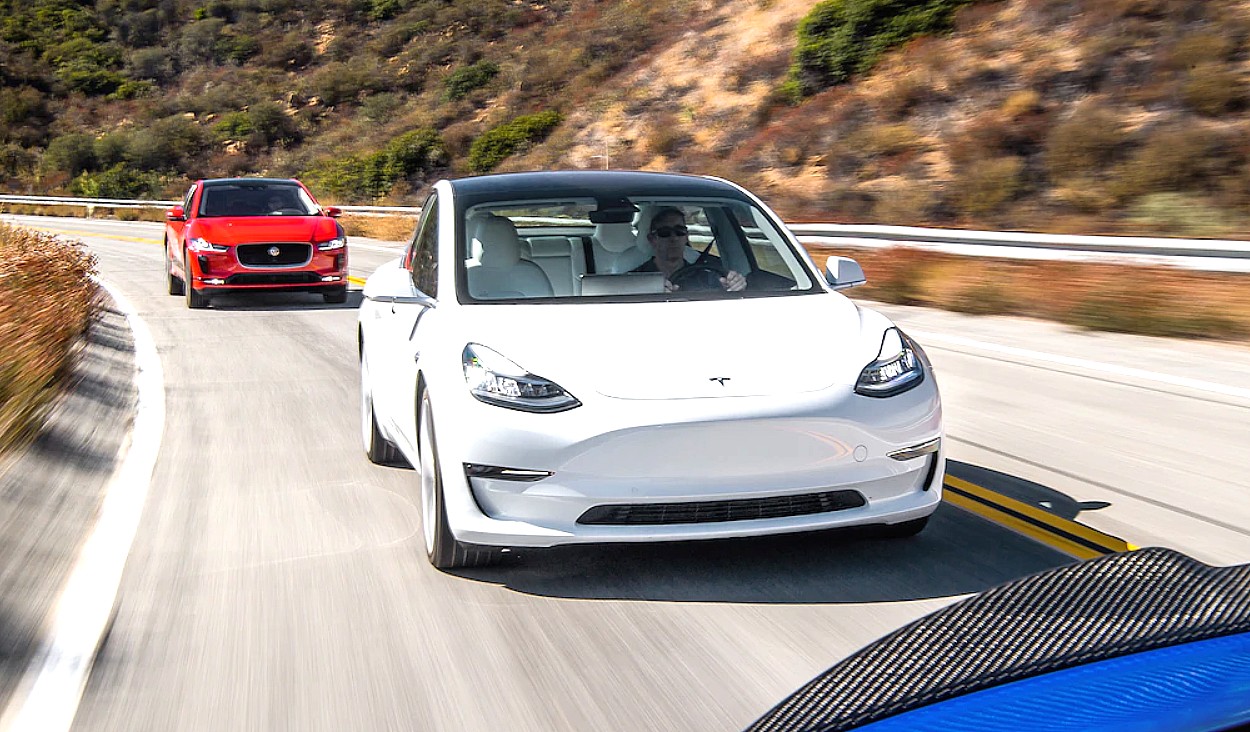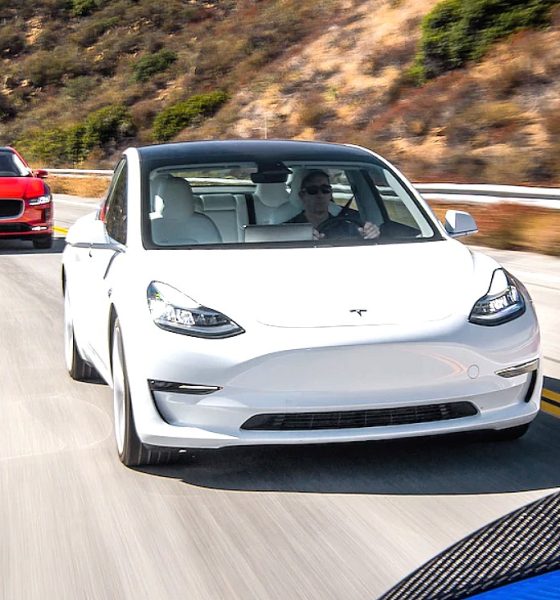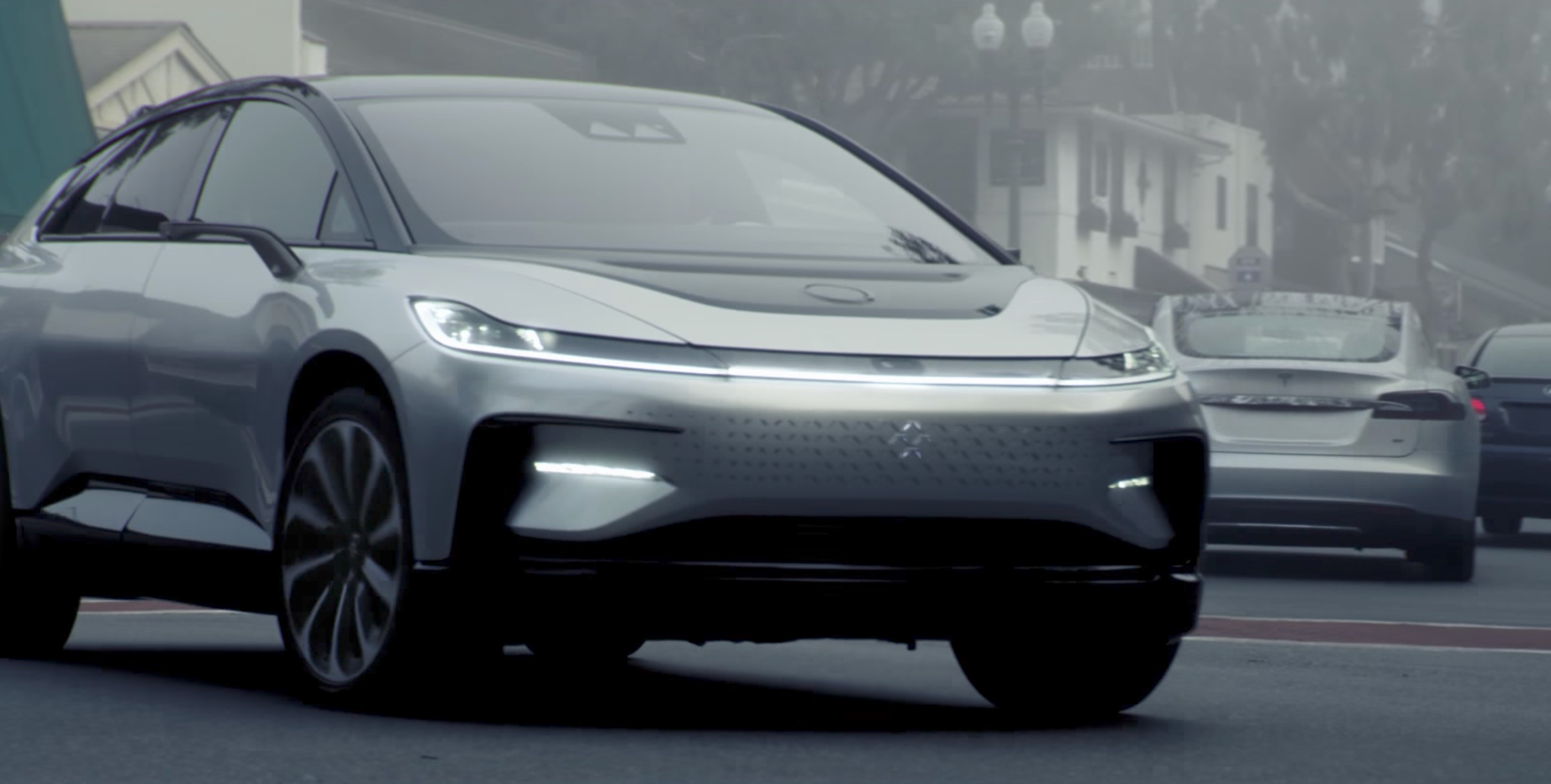

News
‘Tesla Killers’ are struggling to live up to their names
Given the struggles faced by most new electric vehicle (EV) releases over the last few years, it may be time to put away the phrase ‘Tesla Killer’ in favor of a more realistic label like ‘Tesla Kind-of Competitor.’ With brands like Faraday Future and Fisker Inc. already come and (almost) gone in the same EV arena that Tesla continues to thrive in, each new entrant looks to be the next at-risk for being an ‘also-ran’ in the quest for success in the consumer market.
As more tech knowledge is gained, supply deals are made, and Tesla continues educating potential buyers about the positive realities of electric car ownership, perhaps the ‘Tesla Killer’ label will be bandied about again. In the meantime, however, competitors like the Jaguar I-PACE and the Audi e-tron are left with the cold, hard reality: They’re just not Tesla, and that’s not yet a good thing for shoppers to be thinking about their product right now.
“If a customer is choosing the I-PACE over the comparable Tesla, they are making the conscious decision: I don’t want the Tesla,” said Ed Kim, an analyst at the car-market research and consulting firm AutoPacific, as quoted in an article on Bloomberg about Tesla’s struggling competition. “You really have to be someone who doesn’t like Tesla, who doesn’t want the Tesla product, in order to go for this.”


The e-tron and the I-PACE might actually stand a good chance at breaking into a market dominated by Tesla given their brands’ experience and financial resources in the automotive world already. As Bloomberg’s article pointed out, their sales numbers are going to have to perk up soon, though, and given some advertising tactics taken up by both brands, they’re aware of this need. Jaguar is currently offering a $3,000 ‘Tesla Conquest’ incentive, meaning current Tesla owners buying an I-PACE will receive an additional $3,000 credit towards their purchase as part of a combined $15,000 savings package program. Last month, Audi infamously decided to block Superchargers in order to spark marketing-driven conversations with Tesla owners there to ‘fill’ up.
There are a variety of reasons why ‘Tesla Killers’ aren’t living up to their name – some are speculation and some have pretty solid facts to support their case. Getting a late start in the EV game is probably the most glaring shortcoming of Tesla’s competitors, but that’s not always the determining factor. Although Tesla is lauded as a technology company that also makes cars, a sentiment expressed to applaud their achievements, there’s no rule saying they will keep that crown forever. (My source: Pirates of Silicon Valley meets Tesla Goes to China). With the kind of deep pockets legacy auto still has, they could throw their money around and make some magic happen there, if you will.
Education of the sales force seems to be a serious shortcoming as well, especially according to owners who’ve experienced it directly. In early July this year, one Jaguar I-PACE owner shared a very frustrating tale with Teslarati which involved his car failing to meet its stated battery range by a significant amount, a lack of working charge stations, and delays in servicing due to limited know-how when it came to the company’s new electric vehicle. Tesla is often chided for its growing pains in service, but legacy auto doesn’t always have a pristine record, and Tesla is always working to improve and can move at an incredible speed to do so.
Then there are theories put forth by people like Sandy Munro, a teardown specialist who has made waves in the Tesla community for his comments about the Model 3 manufacturing process. Commenting on the underwhelming battery range from Tesla competitors such as the Audi e-tron and the Jaguar I-PACE in an interview with Sean Mitchell of AllThingsEV, Munro noted that this is simply because of their lack of vertical integration. “(It’s) because they’re buying them from somebody else,” he mused. Other comments made in the interview involved the long-term nature of any battery development outside of Tesla and the major battery manufacturers thanks to patents and licensing requirements. In other words, Jaguar and Audi might not be victims of ‘you snooze, you loose,’ per se, but rather ‘you don’t stay awake, you pay.’
To the extent that it’s amusing watching Tesla move so far ahead in the EV race, it’s not a terrible thing if they end of sharing the stage a bit with others down the road. Elon Musk has noted on several occasions that Tesla alone can’t achieve the total transformation that’s needed to achieve his sustainability goals. It’s good that others are trying, and a handful of actual ‘Tesla Killers’ that keep the brand on its toes is good for everyone, even those just in it for the cool factor. Better competition for Tesla means Tesla just gets better. Then they get better to keep up. And so it goes.

News
Tesla (TSLA) receives “Buy” rating and $551 PT from Canaccord Genuity
He also maintained a “Buy” rating for TSLA stock over the company’s improving long-term outlook, which is driven by autonomy and robotics.

Canaccord Genuity analyst George Gianarikas raised his Tesla (NASDAQ:TSLA) price target from $482 to $551. He also maintained a “Buy” rating for TSLA stock over the company’s improving long-term outlook, which is driven by autonomy and robotics.
The analyst’s updated note
Gianarikas lowered his 4Q25 delivery estimates but pointed to several positive factors in the Tesla story. He noted that EV adoption in emerging markets is gaining pace, and progress in FSD and the Robotaxi rollout in 2026 represent major upside drivers. Further progress in the Optimus program next year could also add more momentum for the electric vehicle maker.
“Overall, yes, 4Q25 delivery expectations are being revised lower. However, the reset in the US EV market is laying the groundwork for a more durable and attractive long-term demand environment.
“At the same time, EV penetration in emerging markets is accelerating, reinforcing Tesla’s potential multi‑year growth runway beyond the US. Global progress in FSD and the anticipated rollout of a larger robotaxi fleet in 2026 are increasingly important components of the Tesla equity story and could provide sentiment tailwinds,” the analyst wrote.
Tesla’s busy 2026
The upcoming year would be a busy one for Tesla, considering the company’s plans and targets. The autonomous two-seat Cybercab has been confirmed to start production sometime in Q2 2026, as per Elon Musk during the 2025 Annual Shareholder Meeting.
Apart from this, Tesla is also expected to unveil the next-generation Roadster on April 1, 2026. Tesla is also expected to start high-volume production of the Tesla Semi in Nevada next year.
Apart from vehicle launches, Tesla has expressed its intentions to significantly ramp the rollout of FSD to several regions worldwide, such as Europe. Plans are also underway to launch more Robotaxi networks in several more key areas across the United States.
News
Waymo sues Santa Monica over order to halt overnight charging sessions
In its complaint, Waymo argued that its self-driving cars’ operations do not constitute a public nuisance, and compliance with the city’s order would cause the company irreparable harm.

Waymo has filed a lawsuit against the City of Santa Monica in Los Angeles County Superior Court, seeking to block an order that requires the company to cease overnight charging at two facilities.
In its complaint, Waymo argued that its self-driving cars’ operations do not constitute a public nuisance, and compliance with the city’s order would cause the company irreparable harm.
Nuisance claims
As noted in a report from the Los Angeles Times, Waymo’s two charging sites at Euclid Street and Broadway have operated for about a year, supporting the company’s growing fleet with round-the-clock activity. Unfortunately, this has also resulted in residents in the area reportedly being unable to sleep due to incessant beeping from self-driving taxis that are moving in and out of the charging stations around the clock.
Frustrated residents have protested against the Waymos by blocking the vehicles’ paths, placing cones, and “stacking” cars to create backups. This has also resulted in multiple calls to the police.
Last month, the city issued an order to Waymo and its charging partner, Voltera, to cease overnight operations at the charging locations, stating that the self-driving vehicles’ activities at night were a public nuisance. A December 15 meeting yielded no agreement on mitigations like software rerouting. Waymo proposed changes, but the city reportedly insisted that nothing would satisfy the irate residents.
“We are disappointed that the City has chosen an adversarial path over a collaborative one. The City’s position has been to insist that no actions taken or proposed by Waymo would satisfy the complaining neighbors and therefore must be deemed insufficient,” a Waymo spokesperson stated.
Waymo pushes back
In its legal complaint, Waymo stated that its “activities at the Broadway Facilities do not constitute a public nuisance.” The company also noted that it “faces imminent and irreparable harm to its operations, employees, and customers” from the city’s order. The suit also stated that the city was fully aware that the Voltera charging sites would be operating around the clock to support Waymo’s self-driving taxis.
The company highlighted over one million trips in Santa Monica since launch, with more than 50,000 rides starting or ending there in November alone. Waymo also criticized the city for adopting a contentious strategy against businesses.
“The City of Santa Monica’s recent actions are inconsistent with its stated goal of attracting investment. At a time when the City faces a serious fiscal crisis, officials are choosing to obstruct properly permitted investment rather than fostering a ‘ready for business’ environment,” Waymo stated.
News
Tesla FSD v14.2.2 is getting rave reviews from drivers
So far, early testers have reported buttery-smooth drives with confident performance, even at night or on twisty roads.

Tesla Full Self-Driving (Supervised) v14.2.2 is receiving positive reviews from owners, with several drivers praising the build’s lack of hesitation during lane changes and its smoother decision-making, among others.
The update, which started rolling out on Monday, also adds features like dynamic arrival pin adjustment. So far, early testers have reported buttery-smooth drives with confident performance, even at night or on twisty roads.
Owners highlight major improvements
Longtime Tesla owner and FSD user @BLKMDL3 shared a detailed 10-hour impression of FSD v14.2.2, noting that the system exhibited “zero lane change hesitation” and “extremely refined” lane choices. He praised Mad Max mode’s performance, stellar parking in locations including ticket dispensers, and impressive canyon runs even in dark conditions.
Fellow FSD user Dan Burkland reported an hour of FSD v14.2.2’s nighttime driving with “zero hesitations” and “buttery smooth” confidence reminiscent of Robotaxi rides in areas such as Austin, Texas. Veteran FSD user Whole Mars Catalog also demonstrated voice navigation via Grok, while Tesla owner Devin Olsen completed a nearly two-hour drive with FSD v14.2.2 in heavy traffic and rain with strong performance.
Closer to unsupervised
FSD has been receiving rave reviews, even from Tesla’s competitors. Xpeng CEO He Xiaopeng, for one, offered fresh praise for FSD v14.2 after visiting Silicon Valley. Following extended test drives of Tesla vehicles running the latest FSD software, He stated that the system has made major strides, reinforcing his view that Tesla’s approach to autonomy is indeed the proper path towards autonomy.
According to He, Tesla’s FSD has evolved from a smooth Level 2 advanced driver assistance system into what he described as a “near-Level 4” experience in terms of capabilities. While acknowledging that areas of improvement are still present, the Xpeng CEO stated that FSD’s current iteration significantly surpasses last year’s capabilities. He also reiterated his belief that Tesla’s strategy of using the same autonomous software and hardware architecture across private vehicles and robotaxis is the right long-term approach, as it would allow users to bypass intermediate autonomy stages and move closer to Level 4 functionality.








